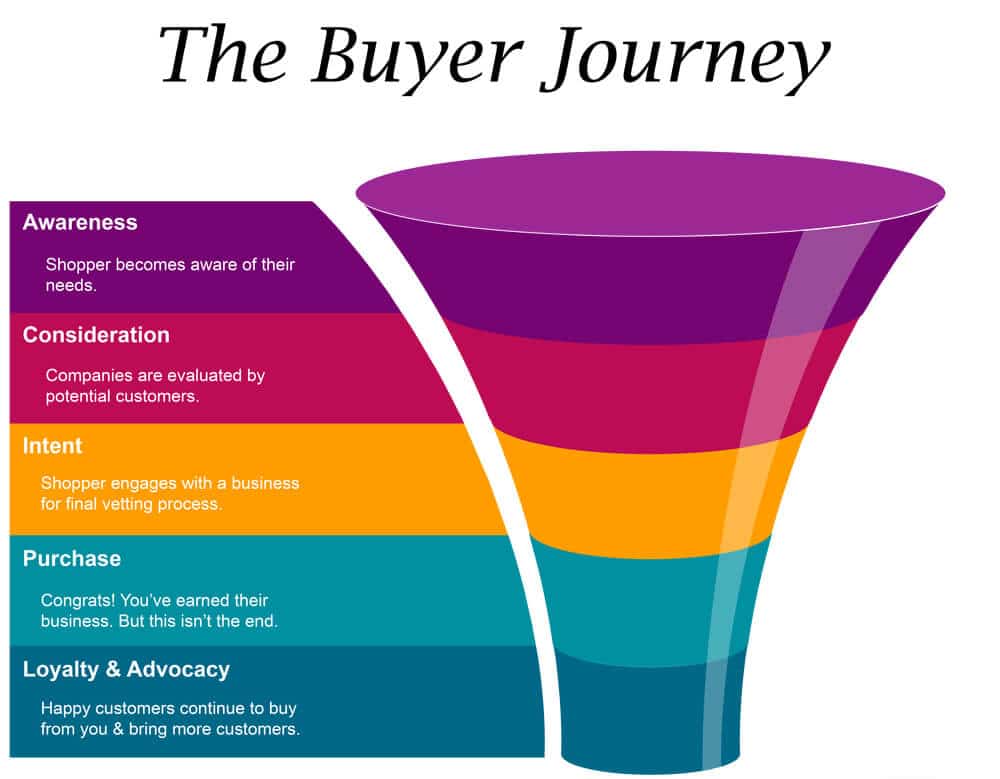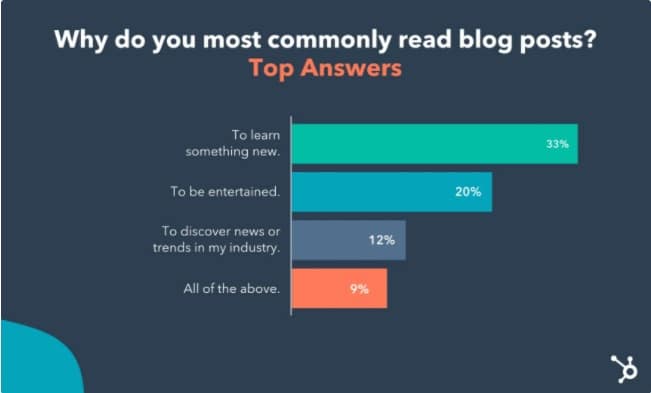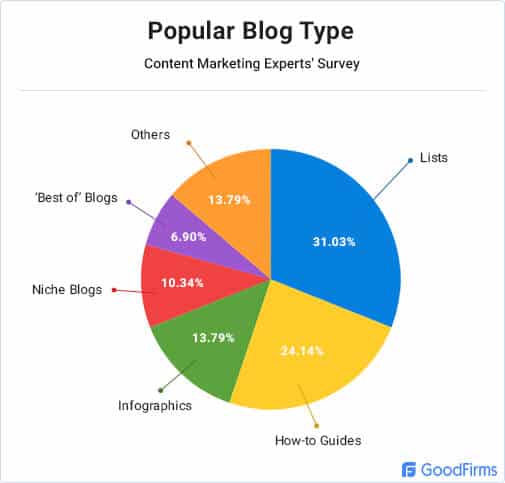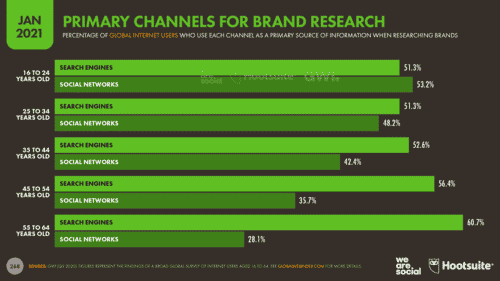
9 Reasons Why People Read Blog Posts
There’s been a fair amount of worry recently that blogging is on its way out. Even blogging guru brand HubSpot found in their research that 40% of people reported not reading blogs at all. Yikes!
Does that mean we’re losing the central component of our content marketing strategies? Is blogging going to be dead?
Let me put your mind at ease: no — blogging isn’t going anywhere. At least not anytime soon. The same HubSpot research that found 40% of people don’t read blogs found that 60% do. The problem brands encounter with engaging their blog post audience is not that users don’t want to read blogs at all. After all, they visited your page in the first place, right?
The problem is that to create great blog content that keeps people engaged (and returning for more), you have to know why people read blog posts. Your blogs, specifically. What led them to your brand? What are they trying to accomplish when they read your blog?
In short: you should be writing content that’s valuable from the customer’s perspective, not yours. Blog posts about your product features and company events? They’re okay to include in your larger content library, but they’re not what’s going to drive organic traffic to your site.
In this article, I’m going to cover why people read blogs and how you can use that information to grow your blog post audience.
Quick Takeaways
- Brands can grow their blog post audience by always writing from the customer’s perspective.
- Most blog content falls at the top of the funnel, or the awareness stage, of the buyer journey.
- How-to guides and checklists are popular because they help people solve problems and accomplish tasks.
- Brands can find creative ways to make their posts both professional and entertaining.
- Smart companies use data to understand the motivations behind their readership and align content accordingly.
More on the customer’s perspective
Before we go through the reasons your blog post audience is reading your content, let’s cover this concept of the customer’s perspective in more detail.
I’ll start with a question: when you’re brainstorming ideas for your blog, do you talk about what customers would find valuable or what you think they’ll find interesting?
Trust me, they’re not the same thing. Truly knowing value from the customer perspective requires time and research. But without it, you’re really just guessing.
The most important advice you’ll get from me in this article is this: you must know what your customer is trying to accomplish in order to create content they’ll find valuable (and that they’ll read). Think about it: this is why blog articles like how-to guides, checklists, and listicles for top tools or strategies are all so popular — they help people solve a problem or accomplish an important task.
You can use your buyer journey as a guide to help you think from your customer’s perspective. Most buyer journeys look something like this:

Most of your blog content is going to fall under that top stage of the funnel: awareness. When a user becomes aware of a need or problem, they turn to the internet for information. Creating content that ranks highly on SERPs for the problems you help your customers solve is a sure way to establish your company’s expertise and grow your blog post audience over time.
9 reasons why people read blog posts
HubSpot conducted a survey that found three main reasons why people read blog posts: to learn something new, to be entertained, and to discover news and trends in their industry. I think this is a pretty accurate high-level view of what drives people to read blogs.

Image Source: Hubspot
But it’s pretty general, too. Let’s dig deeper into more specific reasons that fall under each of these umbrellas.
Learning something new
Accomplish a task
If you’re trying to get something done but don’t know how or need help doing it, searching online is the quickest way to get the information you need. People turn to blogs for step-by-step instructions, guides, how-to tutorials, and checklists to help them accomplish tasks they need to complete at work and in their everyday lives.
In fact, these types of posts consistently top the list for most popular types of blog posts.

Solve a problem
This reason is how most online brand research gets started. Today, when professionals or companies encounter a problem they need to solve, they look online to find potential solutions. Research has found more than half of consumers in every age group use search engines for this purpose.

But here’s the thing: you shouldn’t dive right into your company and solutions. Remember we covered how blogs are comprised mostly of top-of-the-funnel content? Here’s where that’s made clear.
When people search for blog content to help them solve a problem, they start by seeking out content to help them understand their problem and point them in the right direction. When you create topical blog content that educates users about their problem, gives them valuable info to help them solve pieces of it on their own, and establishes your brand as the expert in their minds — and you do this on a consistent basis — you’ll see more and more users returning to your brand when they’re ready to actually make a purchase.
Hone hobbies and interests
Believe it or not, blogs are not all business (for readers, anyway). There are tons of successful blogs built around niche interests and hobbies. But even when you’re creating blog content users will read for fun, remember their ultimate goal: to learn something new. Creating content that informs, instructs, and guides users is most valuable.
Become more educated
People may use blogs to become more educated for a number of reasons. Maybe they’re just looking further into an interesting subject they enjoy (like on a museum blog or science blog). Maybe they need to become more educated about a practical subject they’ll use in their lives (like finances or childcare). Or maybe they’re conducting research for a project at work. Informational blogs can be a definite draw to grow your blog post audience. Just like the how-to guides we covered earlier, educational blog posts establish your brand expertise and put you in position to be the solution of choice for potential customers.
To be entertained
Consume traditional entertainment content
The most straightforward way people are entertained is by blogs created just for that purpose. They exist in many sectors — certainly TV, movies, theater, sports, celebrities, etc. Blogs that cover this type of content and do it well can drive high-revenue readership thanks often to the ads sponsored on their site.
These blogs, however, aren’t as keyword and SEO driven as business blogs. Instead, they’re driven by current events. Most of the time, entertainment blogs become established authorities in their niche and consumers seek out their content directly.
Be entertained at work
However, people still want to be entertained by the professional content they read! Here’s where you’ll have to put your creative thinking hat on. How can you make your professional content also fun and entertaining?
One way is to publish engaging types of content on your blogs. Use infographics to make complex information visible and digestible. Create videos to better connect with your blog post audience on certain topics. And think of how you can put creative spins on relevant brand content!
We love this piece our Marketing Director, Haley, wrote on what The Bachelor taught her about content marketing. Her article might be framed around a reality TV show, but it contains tons of golden nuggets for creating better content.

Who said content marketing can’t be fun, anyway?!
Engage with hobbies and interests
We’re including this one again because it drives readership in different ways. In addition to seeking content that teaches new things around hobbies and interests, people read blog posts related to content they care about just for entertainment, too (for example, an artist who reads museum blog posts to learn about new exhibits).
To discover news and trends in my industry
Stay current
Blog posts about news and trends keep professionals informed about what’s happening in their industries. Knowing your industry, its current climate, and trends contributing to its likely future is important to making smart business decisions. Professionals use blog posts as a resource to this end.
Find sources for content
There are two ways to think about this for creating your own content. First, when you create very shareable content around news and trends in your industry, you’re creating something other professionals can share (and commentate on) on their own platforms. This is something people definitely look for in blog posts.
Second, people look for sources to cite in their own content about news and trends. So, for example, if you create an awesome infographic showing the trajectory of a trend in your industry, your content is more likely to be read and linked in other content, establishing your brand’s thought leadership on the subject.
Using data to grow your blog post audience
Knowing why people read blogs isn’t the end of the work when it comes to growing your blog post audience. You can’t measure your content marketing ROI without data. To consistently create the best content, earn more traffic, and get the most out of your strategy, you need to use data-driven metrics that inform you about your users’ behavior.
Two great sources for this information are your website’s CMS system and Google Analytics. By looking at metrics like page views and search volume, you can determine the motivations behind your users’ readership and create even more content to meet them.
Grow your blog post audience with awesome content
The best blogs publish multiple posts every week. That’s a lot of time — time you probably don’t have if you’re running a business. Marketing Insider Group’s team of writers and SEO experts can deliver you optimized, ready-to-publish content every week for a year or more.
Check out our SEO Blog Writing Service to learn more or set up a quick consultation with me to get started!






